20: English Card-Makers 1761-1905
An initial survey of 19th century playing-card production. More detailed information appears on other pages.
A selection of early English courts, by unknown makers, c.1675-1765.




Paul Bostock and I have published an overview of all the known English card-makers from 1761 to 1905 (details on my home page: About Ken Lodge). We have chosen the dates 1761 to 1905 for the following reasons. The start date is just before the introduction of the Garter Ace and represents a time when a few of the early makers whose cards still exist were operating. We have virtually no evidence of the output of even earlier makers. By 1905 all the major 19th century makers had ceased to exist except for Goodall and De La Rue. The next set of long-term makers did not appear until after WWI with Waddington and Universal, in particular. The information has been put together mostly from the London Post Office and other directories with additional information from the taxation records and stationers' journals. For the 18th and early 19th centuries the blog by Ian Maxted, who includes card-makers along with the book printing trades, is particularly informative:
• Blog by Ian Maxted: bookhistory.blogspot.co.uk/►
There are, of course, uncertainties with regard to some of the listings and even omissions and certain practical matters have to be borne in mind. For instance, if a maker does not appear, it may be an omission rather than his/her not operating at that period: for example, we found this in the case of the early period of Reynolds, who had a Garter AS assigned to him in 1809 according to the records, but does not appear in the directories until 1824. Also there may be a time-lag (usually just one year) before the compilers of the directories received the information about the start of a new enterprise: Goodall doesn't appear until 1821, although we know he started his business in 1820. Equally, at the other end of operation, it is not always possible to determine exactly when a maker actually finished producing cards. There may well be some adjustment to the information in the tables after Paul and I have finished looking through all the archives.
One or two particular comments are necessary at this point to explain some of the information in the tables. Yates & Barnes appear in 1763 at the same address as Durrance in 1761; we assume some kind of continuity/take-over, though there seems to be no directory for 1762 to help us confirm this. There is a gap of a few years in the case of Henry Hart; whether the business folded and was then revived by a son of the same name or the original Henry is not clear. We know nothing about J & T Cotton, but they are listed by Maxted. Matthew Gibson and Joseph Hunt certainly joined forces in 1801, so the continuation of Gibson alone in one of the directories is likely to be an error. The amalgamation of Hall & Bancks and Hunt in 1840 was not the end of cards under those two names; this seems to have taken place in 1849 when the Bancks Brothers took over the firm and the first Frizzle with their name on appeared. Changes of name for the same firm are indicated at the appropriate date in the row. In 1841 an E J Stone appears at 10 Belle Sauvage Yard, the same address where Josiah Stone operated from at least 1812 until 1820. Is this the same person, or a descendant? Since there is no record of an Old Frizzle with Stone’s name, this firm could be a stationer or a pasteboard maker, though there were unappropriated aces that could have been used by such small outfits. Similarly with Henry Wheeler; he was deported in 1836 for possessing illegal aces of spades and so another Henry Wheeler, who appears in 1844 as a pasteboard maker, is not the same person, though may be a son. And William Creswick takes over from Thomas in 1846 as a stationer, so when Creswick cards ceased to be produced is unclear; indeed, we don't know what family relationship they may have had. Nor do we know when Turnbull ceased producing cards. C T Jefferies, the printer of Hunt’s last cards, operated in Bristol, not London.
1761-1789

1790-1818

1819-1842

1843-1870

1871-1905

For more details of the major makers of this period, see pages 30-32.
Here are a few samples from each decade from 1770 to 1850.

Above: Gibson & Gisborne, c.1774

Above: Llewellyn, c.1782


Above: Gibson, c.1795

Above: Stopforth, c.1805

Above: Brotherton, c.1810

Above: Creswick, c.1825

Above: De La Rue D1, white edging on pips, c.1832

Above: Reynolds R1, c.1845
During the period 1790-1830 most packs were of one of two types. These I refer to in my book The Standard English pattern as Type I and Type II. These large categories get us quite a long way in classifying and identifying wood-block packs of this period. There are more subtle differences in each category, but that's the subject of Paul's and my book, mentioned at the top (details on my Homepage), and it's not necessary to go into that amount of detail here. So, I'll exemplify the types on the most obvious feature that distinguishes them, the way in which the eye-balls are represented.

Above: Type I / Type II
In Type I the eye-ball is represented with a filled-in area at the end of each eye; in Type II it is represented as a dot touching the top eye-lid, sometimes touching both lids. Note that there are other distinguishing features, such as the representation of the moustache or cheek-shading and the lines on the kings' shoulder at the right: horizontal or sloping, but, as I say, we needn't dwell on these details here. The profile cards show the same kinds of eye-ball, the only difference being that the profile Type II has the dot at the edge of the eye.

Above: Type I / Type II
Type I was used mostly by makers such as Hunt, Reynolds, Goodall and Hardy, whereas Type II was used by Hall. Some makers used both types, for example, T. Wheeler and Stopforth. Of the packs illustrated above those by Llewellyn and Brotherton are Type I, those by Gibson and Stopforth Type II. The early Gibson & Gisborne is an early example of Type I.
At the time of the tax changes that introduced Old Frizzle aces in 1828 several makers seem to have decided to redesign their courts, too. These I have labelled Type III packs, in which the drawing of the faces has been simplified, mostly using single lines, though Type II eye-balls are still used.

Above: Type III
There is a Type III pack with a Garter AS on Paul Bostock's site, which has a recut mark dating it to c.1822 (not 1805 as stated), so it seems reasonable to assume that this was a modernized design from c.1820 onwards. Hardy seems to have been the first to use it, as the other makers who used it, Reynolds, Woolley & Sabine, H. Wheeler and Stopforth, have no examples with a Garter ace. De La Rue used it as the basis for his letter-press printed D2.
The final type, Type IV, is probably best redesignated CR1, as it seems to have been used only by Creswick. Six courts are illustrated above. In this case the eye-balls are all drawn in profile. It is found with both Garter and Frizzle aces, so was probably introduced in 1820 when Creswick started making cards. After 1840 makers were redesigning their courts again, leading to the various maker-specific designs like Reynolds R1 illustrated above, and many of which are illustrated on other pages of my blog.
The development of the wood-block style
The 18th century style of wood-block images up until the end of Blanchard in 1769 had become very crude and almost amateurish. Below is an example by Blanchard from c.1760.

During the 1770s the style was revised and the two eye types given above came into use. By the 1790s both types seem to have been available to all the makers. As you can see from the timeline above, there were only three makers at the beginning of the 1780s rising to six by 1789 with the appearance of Brotherton. So, for example, we find both Type I and Type II packs from both Gibson and Hunt. Note that they did not amalgamate until 1801, so were separate businesses. It's true that there's the issue of mixed packs (see page 39), but equally there are consistent packs which show no signs of mixing. All four examples below are from the 1790s.


Above: Hunt Type I, Hunt Type II


Above: Gibson Type I/Type II
The Hunt Type II pack is unusual: it has three characteristics in particular which it shares with the packs of other makers of the time. Both the Hunt and the Gibson packs shown here have a QH carrying a tulip and an extraneous (and probably erroneous) red staff base for which there is no outline on the block. The other characteristic is to be found on the KD: instead of the usual roundel with a foliate design, as on the Gibson KD shown higher up the page, there are vertical lines on the bottom of his tunic, a feature found also in contemporaneous packs by Hall (A17) and French (A21). (The bracketed references are to the plainbacks website.)

Above: the courts in question from the Hunt pack, which dates to c.1797.
This suggests to me that makers were supplied by the same small number of block makers (this pack has the ubiquitous HC on the KH’s sword), so that different makers have different court sets available to them. Although most packs by Hunt have Type I courts and those by Hall have Type II, there was clearly a period when this was not the case. We know very little about block makers, but in the 1790s the number of card makers fluctuated between six and nine, so it seems reasonable to accept that only a few block makers were needed to supply what was quite a small industry.
After the turn of the century changes occurred that may seem insignificant in themselves but taken together may explain what happened next in the development of the designs. During the Napoleonic wars the tax on cards rose steadily to 2s/6d per pack, which could explain why the small makers Sarah Hardy, French and Groser had all disappeared by 1805, as costs became too great. The merger of Gibson and Hunt in 1801 plus the loss of the small makers reduced the number of makers to six again by 1806. This must have meant a reduction in business for the block makers. After this time the court sets of some of the makers settle down into the pattern that I used to think applied earlier as well. Hunt & Son, as the firm had become by then, seem to have opted for Type I courts without HC on the KH, while Hall, their major competitor of the time, chose Type II with HC. This would have ensured a steady amount of business for at least two block makers. The other makers tend to fluctuate somewhat, though T. Wheeler eventually settles down to Type I and the relative newcomer, James Hardy, son of Sarah, always seems to use Type I, but with stylistic characteristics that are specific to that maker. Reynolds, Fuller and Stone all start up business in the next few years and use Type I or Type II.
The next phase starts around 1820 when Creswick and Goodall appear on the scene, taking the total of makers to eleven. (The maximum number of makers was twelve attained between 1832 and 1838 after the arrival of De La Rue.) It is during the 1820s that we see the first revision of the style of the court cards with Hunt, Hall & Bancks and Creswick “doing their own thing”. (For these designs, see the images on the relevant makers' pages.) These new designs were maker-specific and I suggest that by this time the block maker was an in-house function for these makers. Hardy and Reynolds followed suit around the same time, but their design (Type III), which was in some ways closer to the traditional designs, was used by a number of makers, including Woolley & Sabine, H. Wheeler, Turnbull and the later Stopforth. It is also the basis of De La Rue's traditional design (D2), printed in letter-press. Note in particular the odd angle of the KH’s sword hand, the single-line moustaches and the different eye style, modelled on that of Type II.

Above: Type III, an early redrawing by Hardy, c.1820
Whether this design was made by separate block makers I can’t say, but the fact that it was used by several makers may be an indication that it was. By the 1830s Hardy had revised this design in a way which was specific to him and Reynolds had started to use metal plates taken from the wood block, so that there is consistency in the imprints of his cards from this period. By the 1840s production methods were beginning to change again in the wake of De La Rue’s success, but that's another story. The changes from this time onwards are exemplified on many of the other pages of my blog.

By Ken Lodge
Member since May 14, 2012
I'm Ken Lodge and have been collecting playing cards since I was about eighteen months old (1945). I am also a trained academic, so I can observe and analyze reasonably well. I've applied these analytical techniques over a long period of time to the study of playing cards and have managed to assemble a large amount of information about them, especially those of the standard English pattern. About Ken Lodge →
Trending Articles
Popular articles from the past 28 days
Related Articles
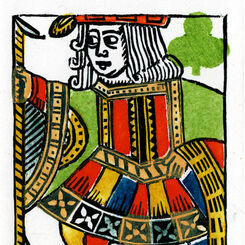
Woodblock and Stencil Jack of Clubs
A limited edition art print of the Jack of Clubs 1984 woodblock joker.
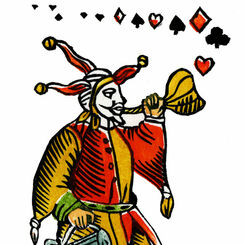
Woodblock and Stencil Joker
A limited edition art print of the 1984 woodblock joker.
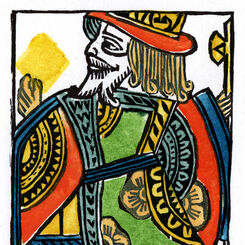
Woodblock and Stencil King of Diamonds
A limited edition art print of the King of Diamonds 1984 woodblock joker.
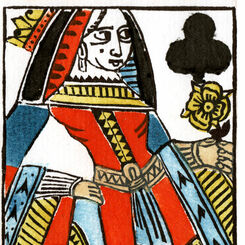
Woodblock and Stencil Queen of Clubs
A limited edition art print of the Queen of Clubs 1984 woodblock joker.
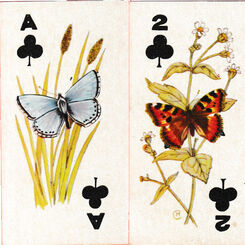
Sweetule Natural History cards
Small cards featuring natural history subjects, given away with packets of sweet cigarettes.
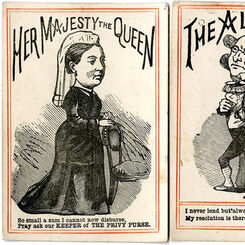
Lend Me Five Shillings
or “Her Majesty’s Privy Purse” - a merry round-the-table game published by D. Ogilvy.
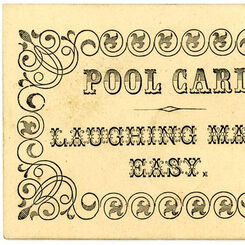
Laughing Made Easy
a Victorian card game published by D. Ogilvy.
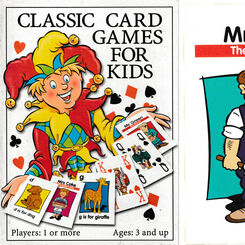
Classic Card Games for Kids
A boxed set of playing cards, Happy Families and an alphabet pack with rules for 22 games.
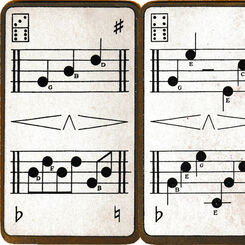
So-Lah – A Game of Music
An early 20th century domino-type musical card game by Goodall.
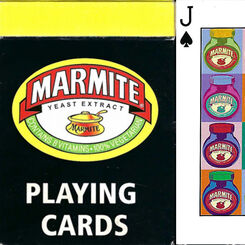
Marmite
Fifty-Four images celebrating a UK savoury spread, that has been around one hundred and twenty two y...
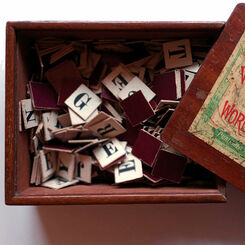
Word Making and Word Taking
How crossword and spelling games became popular.
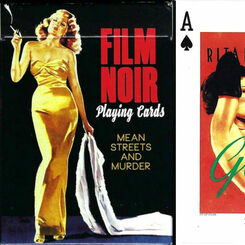
Film Noir
A deck of 55 cards, celebrating hard boiled heroes, wise-cracking women, mean streets, guns and gums...
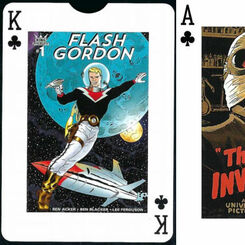
Science Fiction
A deck of 55 cards, celebrating a time when Science Fiction truly was, Science Fiction.
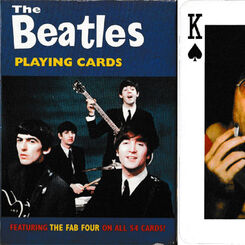
The Beatles playing cards
Two packs featuring photos of The Beatles issued by the same publisher in 2004 and 2005.
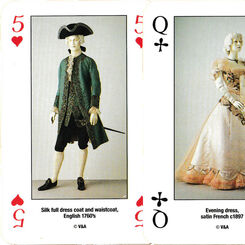
Costume Playing Cards
Four centuries of costumes from the Costume Court at the Victoria and Albert Museum.
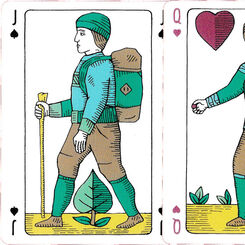
Commoners playing cards
Created by Ian Cumpstey dedicated to the common land and the countryside.
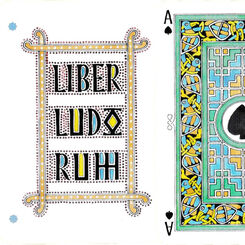
Liber Ludorum
Liber Ludorum playing cards created by Ian Cumpstey in the insular style, United Kingdom, 2019.
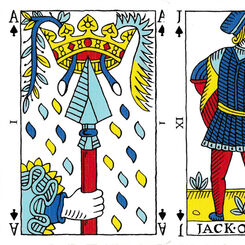
Pike and Clover playing cards
Pike and Clover playing cards created by Ian Cumpstey, Cumbria, UK, 2018.
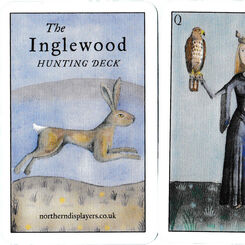
Inglewood Hunting Deck
Inglewood Hunting Deck created by Ian Cumpstey, United Kingdom, 2023.
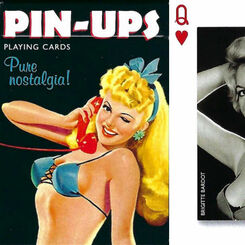
Pin-Ups
A deck of 55 cards celebrating a golden age of cheeky, naughty, bold and curvy ladies in film.
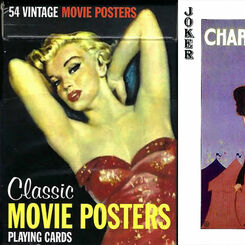
Classic Movie Posters
A deck of 55 cards presenting vintage classic movies and their stars.
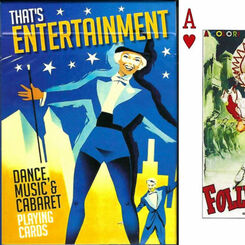
That’s Entertainment
A deck of 55 cards celebrating 20th Century vaudeville, musicals and cabaret.
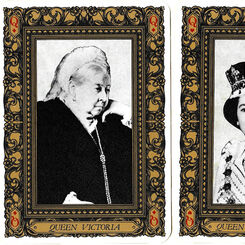
British Monarchs
Commemorating the royal wedding of Charles, Prince of Wales to Lady Diana Spencer on the 29th
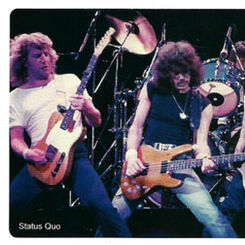
Rock & Pop Legends
Stunning photos of a selection of US and UK music artists.
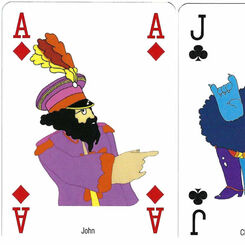
The Beatles • Yellow Submarine
A colourful deck celebrating the 1968 animated feature film based on the Lennon/McCartney song of th...
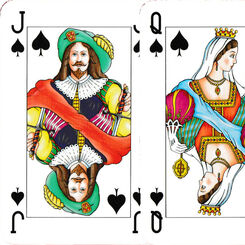
Dutch Court playing cards
Games & Print Services’ version of the Dutch pattern.
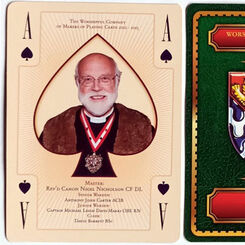
Past Masters’ Association Presentation Pack
The Worshipful Company of Makers of Playing Cards Past Masters’ Association Presentation Pack, 2013....
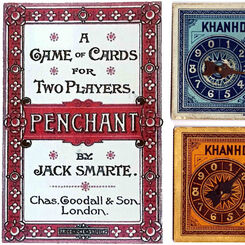
The Search for New Games in the late 19th century
A few new games survived and are still around today; most came and went and are only witnessed in th...
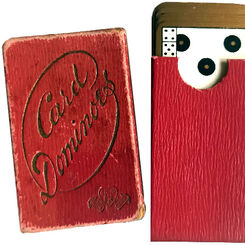
Miniature Card Dominoes
A miniature set of Goodall domino cards (5.9 x 3.5 cms) still in perfect condition.
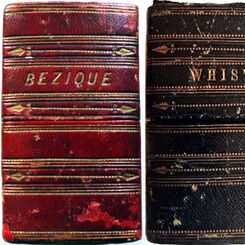
T. Drayton & Son
Bezique and Whist boxed sets by T. Drayton & Son, London, c.1875.
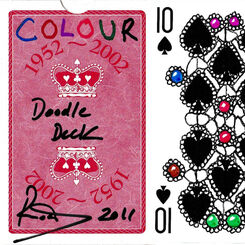
Colour doodle deck
“1952-2002 commemorative deck” customised with doodles by an uncredited artist, UK, 2011.
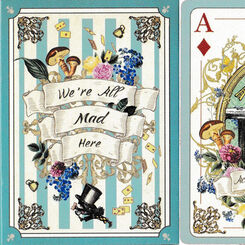
Alice in Wonderland: we’re all mad here
Alice in Wonderland themed playing cards, UK, 2020.
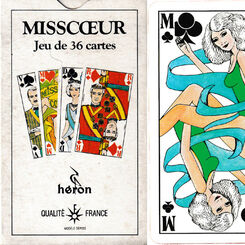
MISSCŒUR
Elongated cards from France with a fourth court card, a Miss.
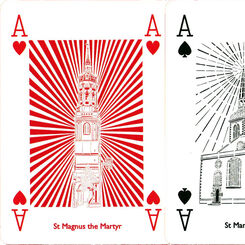
Wren 300 playing cards
Papercuts by Chloe Campbell of the 52 Wren churches in the City of London.
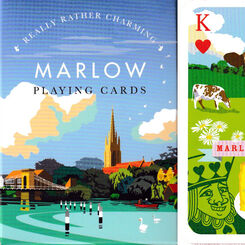
Marlow playing cards
Visitor attractions and businesses to be found in Marlow, Buckinghamshire.
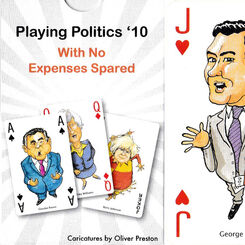
Playing Politics 2010
“Playing Politics ’10: With no expenses spared” featuring caricatures by Oliver Preston, published b...
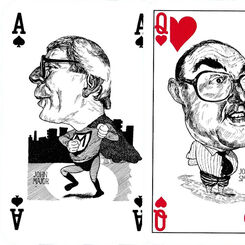
Playing Politics ’92: Pack of lies
Playing Politics ’92: Pack of lies with caricatures by Grant Robertson, UK.
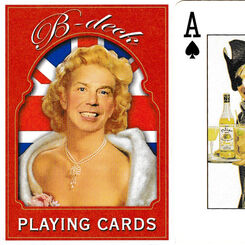
B-Deck
“B-Deck” scurrilous playing cards poking fun at a former UK prime minister.
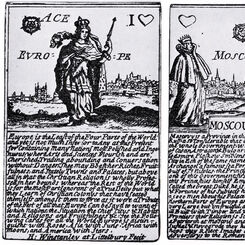
Winstanley Geographical cards
Facsimile of Winstanley’s Geographical cards produced by Harold & Virginia Wayland, 1967.
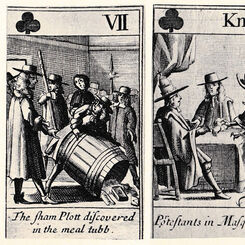
Meal Tub Plot
Meal Tub Plot playing cards [facsimile] with 17th century sketches by Francis Barlow.
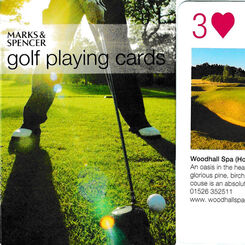
Golf playing cards
Golf playing cards published by Marks & Spencer, UK.
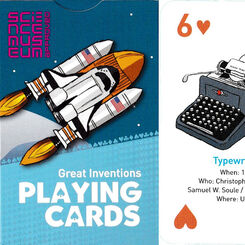
Great inventions playing cards
Great inventions playing cards designed by Gary Wyatt, United Kingdom, 2011.
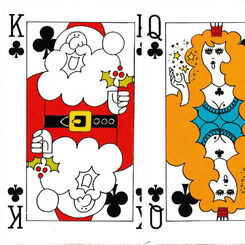
Christmas 1980 playing cards
Festive courts on a Waddingtons pack designed to celebrate Christmas 1980.
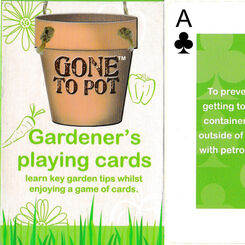
Gone to Pot: Gardener’s playing cards
‘Gone to Pot’: special playing cards for keen gardeners, United Kingdom.


